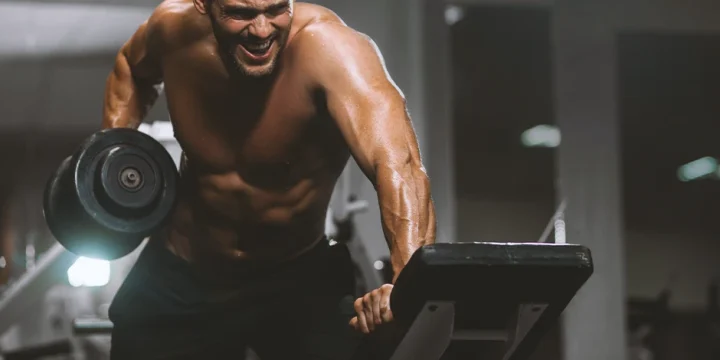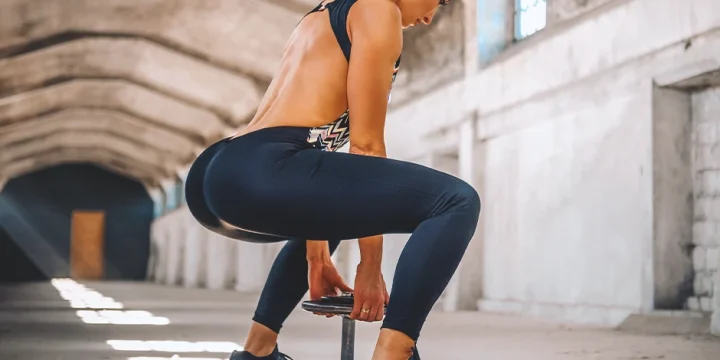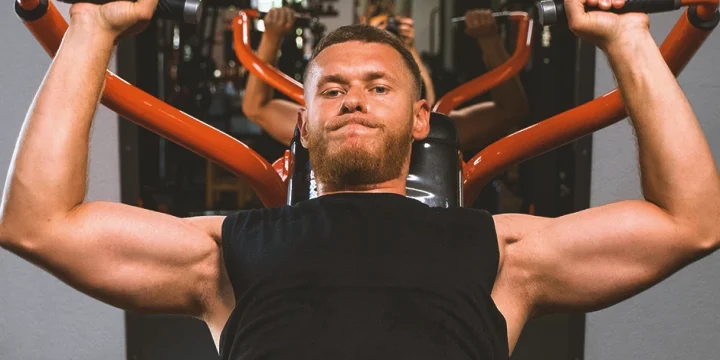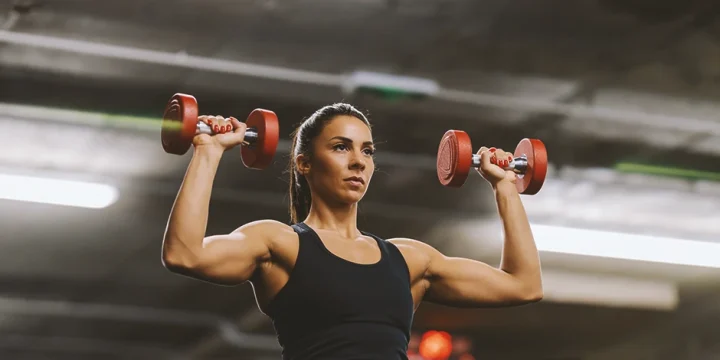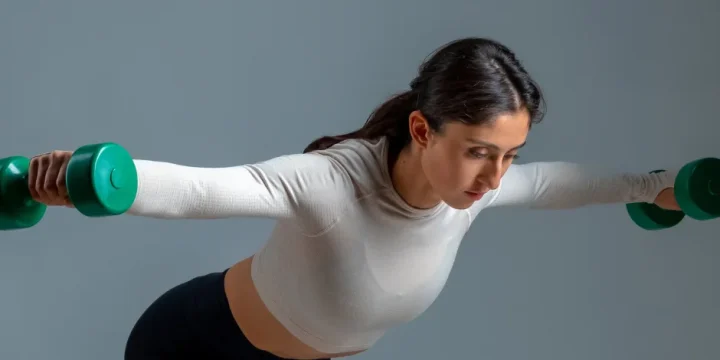Full-body workouts are an excellent method to train every major muscle group. You can build the foundation of your lean muscle mass by exercising three times a week.
As a certified fitness trainer, I've used these full-body exercises to help my clients obtain their fitness objectives.
In this article, I will explain the best full-body exercises and schedules and the benefits of exercising your entire body.
Quick Summary
- The best full-body workouts like the bench press, overhead press, back squat, bent-over row, and pull-up target multiple muscle groups for comprehensive strength building.
- To build lean muscle mass efficiently, incorporate these full-body workouts that include compound exercises for multi-joint movements, ideally three times a week.
- According to ResearchGate, compound exercises, like those in full-body workouts, require more energy and coordination, thus burning more calories than single-joint exercises.
- As a trainer, I find full-body workouts to be highly effective for clients looking to increase strength and muscle mass, offering a balanced approach to fitness with significant calorie burn.
The Best Full Body Exercises

1. Bench Press
The barbell bench press is a well-known exercise in the weightlifting community.
"The bench press is a full-body exercise despite focusing on certain muscles. The bench press may help you increase overall strength to prepare for other workouts while also making you feel like a super powerful badass."
- Antonia Henry, NASM Certified Personal Trainer
When you bench press, you train your pectoralis major (chest). The triceps and shoulders are other muscles that help move the weight during a bench press.
How to perform:
- Lie on a bench with your hands slightly outside, shoulder-width apart.
- Set your shoulder blades by squeezing and pressing them into the bench.
- Breathe deeply and let your spotter assist you with the lift-off to keep your upper back taut.
- Allow the weight to settle, and keep your upper back tight after lifting off.
- Inhale and slowly lower the bar by freeing the elbows.
- Straighten the bar to the base of your sternum (breastbone) and contact the chest.
- Press yourself to the bench, push your legs into the ground for leg drive, and extend your elbows to bring the bar up to the starting position in a straight line.
- Repeat for reps.
2. Overhead Press
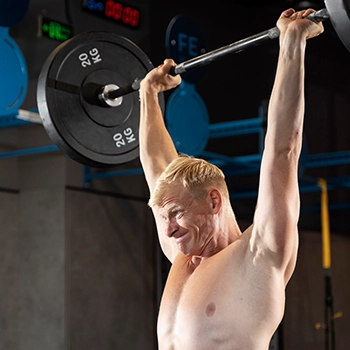
The overhead press is a full-body workout, targeting your shoulders and arms for lifting while your lower body and abs maintain balance.
I always recommend it for those aiming to build robust shoulders and bulkier arms. I advise using a tight grip to avoid shoulder discomfort and prevent elbow flare. When my clients push the bar overhead, I remind them to lock their elbows and add a shoulder shrug.
This move works your traps and prevents shoulder impingement.
How to perform:
- Stand with the barbell on your front shoulders and both hands close to your shoulders.
- Press the barbell over your head until it is balanced over your upper body and midfoot.
- Lock your elbows at the peak and shrug your shoulders to the roof.
- Hold the barbell at the top for a second. Then return it to the front of your shoulders. Keep your legs straight, and do not use them.
- Repeat for the desired number of reps.
3. Back Squat
A barbell squat, or barbell back squat, is a complex exercise that works for muscular groups in your lower body, such as your glutes, hamstrings, and lower back.
How to perform:
- Employ an overhand grip to hold a barbell over your upper back; avoid placing it on the neck.
- Hug the barbell into the traps to activate the upper back muscles.
- Squat down carefully with the bar's weight - head up, buns out, and back straight.
- Lower yourself until the knees and hips are aligned, with your legs at 90 degrees - a deeper squat will be beneficial, but work on your strength and flexibility first.
- Press your heels into the ground to thrust yourself back up explosively. Maintain your form until you can stand up straight.
- Repeat until you've completed the required amount of reps.
4. Bent-over Row
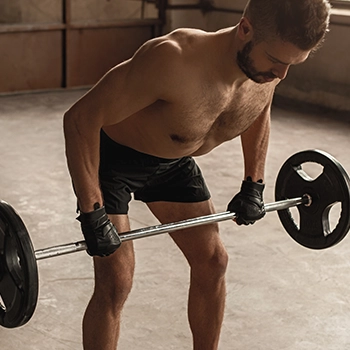
The bent-over row is a crucial exercise for back days. It's excellent for building back muscles, targeting not just the back but also the biceps and core.
Together with my client, we focus on strengthening key upper back muscles like the rhomboids, lats, and traps.
I always ensure proper form to engage the arms, lower back, and core muscles effectively for optimal support and results.
How to perform:
- Take an overhand hold on a barbell, hands slightly broader than shoulder-width apart.
- With your knees bent slightly, maintain your back straight and bend your upper body perpendicular to the floor.
- In this posture, row the barbell upwards into the lower part of the chest.
- Pause and return to the starting position under control.
- Repeat for the desired number of reps.
5. Pull-up
The pull-up is a foundational exercise in many functional strength-training regimens because it is an efficient approach to increasing general pulling power, building your upper body, and enhancing your back muscles.
It's a closed-chain movement that works your trapezius, latissimus dorsi, core, deltoids, rhomboids, forearms, biceps, and triceps.
How to perform:
- Stand on a bench or a block immediately below the bar.
- Grab the bar with both hands shoulder-width apart and an overhand grip (wrists pronated, palms facing away from you).
- Allow your legs to come off the bench or block, and hang your body gently. Arms should be completely extended in this dead hang position.
- Squeeze your glutes and stretch your quadriceps to engage the core and create full-body tension.
- Depress your lats (bringing your shoulder blades downward) to begin the pull, and then start pulling upward to get the chin over the bar.
- Squeeze your lats together to finish the pull.
- Maintain full-body tension as you slowly stretch both arms to return to a complete hang posture.
- Repeat for reps.
Best Full Body Workout Schedule

You may raise the intensity of a workout by adding extra weights to your comfort level.
Here is an example 3-day full-body exercise routine:
- Monday: Workout A
- Tuesday: Rest
- Wednesday: Workout B
- Thursday: Rest
- Friday: Workout C
- Saturday: Rest
- Sunday: Rest
Full Body Workout A
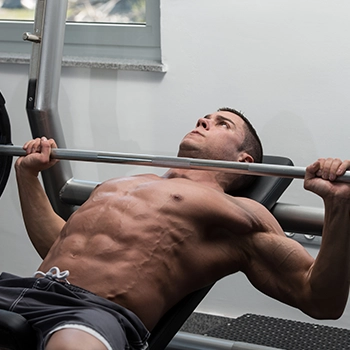
- 3 sets of 5 to 8 repetitions of the bench press
- 3 sets of 10 to 14 repetitions of lat pulldown
- 3 sets of 5 to 8 repetitions of squats
- 3 sets of 8 to 15 repetitions of the leg curl
- 2 sets of 5 to 8 repetitions of dumbbell shoulder press
- 2 sets of 10 to 14 repetitions of the incline curl
- 2 sets of 10 to 14 repetitions of the triceps push down
Full Body Workout B
- 3 sets of 10 to 14 repetitions of incline dumbbell press
- 3 sets of 10 to 14 repetitions of the seated cable row
- 3 sets of 10 to 14 repetitions of the leg press
- 3 sets of 10 to 14 repetitions of the Romanian deadlift
- 2 sets of 15 to 20 repetitions of lateral raise
- 2 sets of 10 to 14 repetitions of the dumbbell hammer curl
- 2 sets of 10 to 14 repetitions of the overhead triceps extension
Full Body Workout C
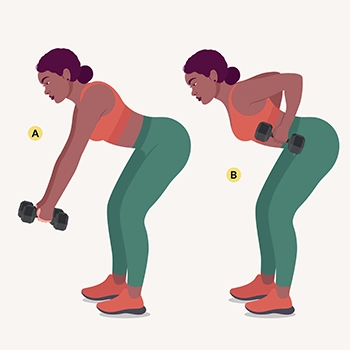
- 3 sets of 15 to 20 repetitions of the cable crossover
- 3 sets of 5 to 8 repetitions of dumbbell row
- 3 sets of 15 to 20 repetitions of leg extension
- 3 sets of 15 to 20 repetitions of the leg curl
- 2 sets of 10 to 14 repetitions of bent-over lateral raise
- 2 sets of 10 to 14 repetitions of the preacher curl
- 2 sets of 20 to 15 repetitions of lying triceps extension
Benefits of Full Body Workout

1. More Calories Burned in Less Time
When you do a full-body workout session instead of just an arm or shoulder day, you burn many calories in a given session.
According to ResearchGate, compound exercises that include several major muscle groups, such as bodyweight squats and lunges, take more energy to coordinate motion, move heavier training loads, and give oxygen to active muscles than single-joint workouts that only use one or two small muscle groups [1].
2. Increase Muscle Mass
Although isolation training is beneficial to muscle hypertrophy, it is not for everybody.
"Overzealous isolation workout one day per week is insufficient for most people to observe muscle growth changes."
- Tony Gentilcore, Strength Coach & Co-founder of Cressey Sports Performance
According to the National Institute of Health (NIH), with full-body training, you target any particular muscle 2-3 times per week for enhanced muscle growth (assuming proper loads and recovery) [2].
3. Increase Workout Efficiency
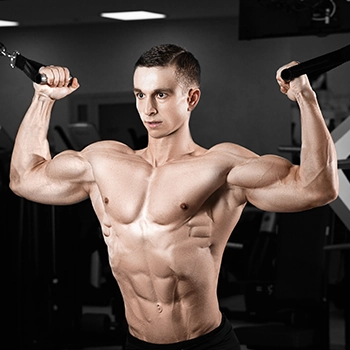
In my training approach, I advocate for multi-joint exercises like back squats that engage the entire body.
These exercises effectively target the same muscle groups as several machines, such as leg curls and extensions, all in one movement.
Additionally, squats uniquely demand core stability to support the body while handling a bar, a feature not found in single-joint exercises.
4. Have More Flexibility
Imagine working out whenever and wherever you want without disrupting your entire schedule.
That is precisely what full-body exercise enables.
Exercising the whole body as one integrated unit may activate the same muscles in one session that would otherwise need a couple of isolation-based workouts.
5. Increase Strength
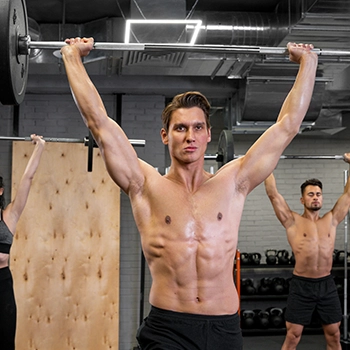
According to the NIH, to grow stronger, you must execute activities that allow you to employ the greatest weight [3].
Compound workouts, such as squats, deadlifts, and bench presses, are full-body motions that require a high level of full-body effort.
Including these exercises in your full-body workout routine will challenge your body to consistently, and effectively increase strength.
Role of Nutrition in Full-Body Workouts
Nutrition plays a crucial role in enhancing the effectiveness of full-body workouts.
- Pre-workout meals, rich in carbohydrates and protein, provide the necessary energy and muscle support.
- Post-workout nutrition, focusing on protein and some carbohydrates, aids in muscle recovery and growth.
- Hydration is vital throughout, as water supports metabolic processes and temperature regulation.
- Key nutrients like protein are essential for muscle repair, while carbohydrates replenish energy stores.
- Micronutrients, such as vitamins and minerals, support overall health and workout recovery.
Balancing these nutritional elements ensures optimal performance, quicker recovery, and better results from full-body workouts.
FAQs
What Is the Big 5 Full Body Workout?
The big 5 full body workouts are bench presses, squats, overhead presses, deadlifts, and pull-ups.
Are Full Body Workouts More Effective?
Yes, full-body workouts are more effective as they yield a higher total energy consumption per session.
Can I Train Full Body every day?
No. You cannot train your full body every day. Because this is more difficult training than normal, the muscles need 2 to 3 days to recuperate from the tension.
References:
- https://www.researchgate.net/publication/8390726_
- https://www.ncbi.nlm.nih.gov/pmc/articles/PMC8372753/
- https://www.ncbi.nlm.nih.gov/pmc/articles/PMC6950543/
About The Author
You May Also Like
